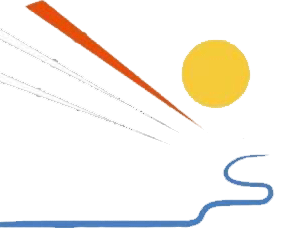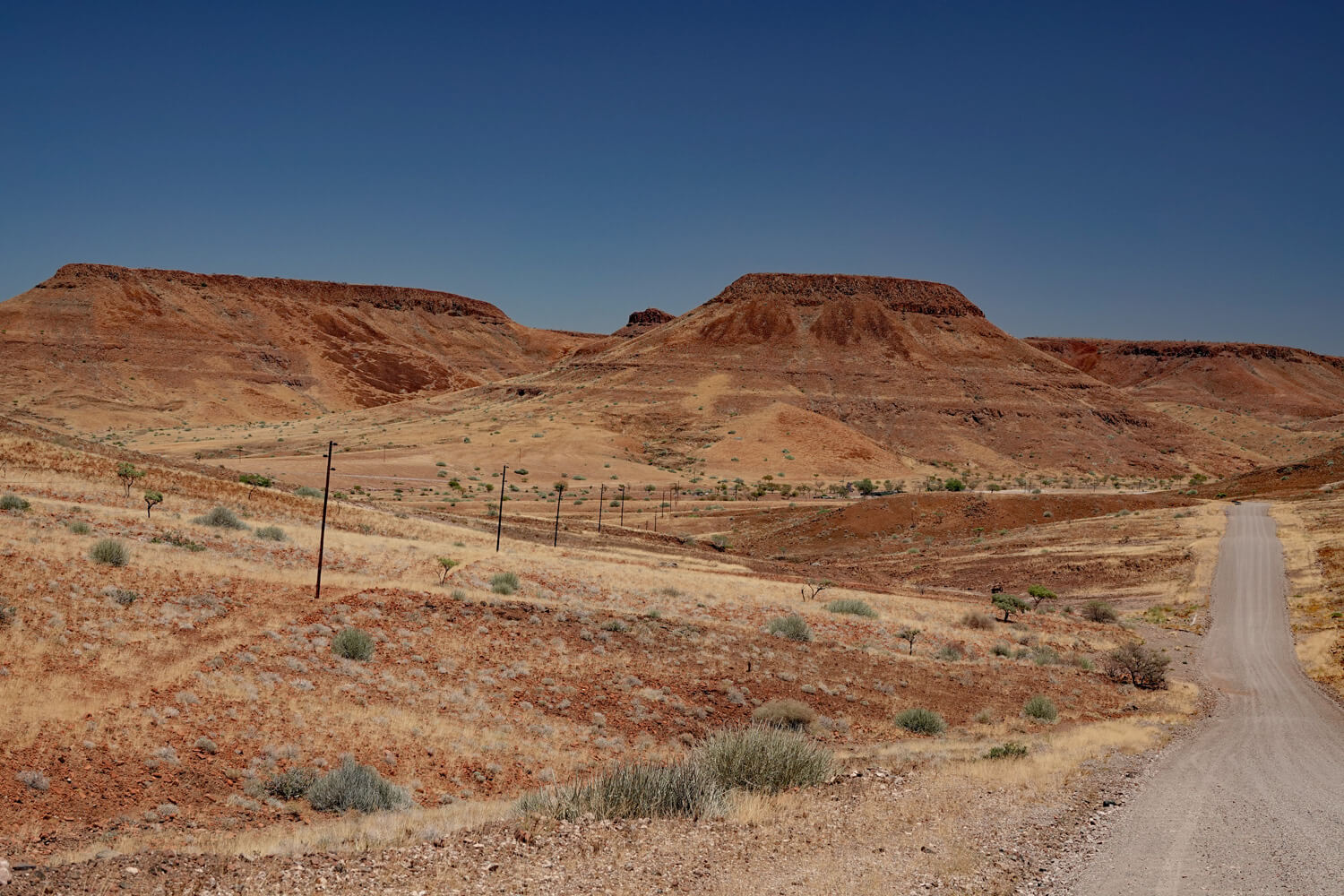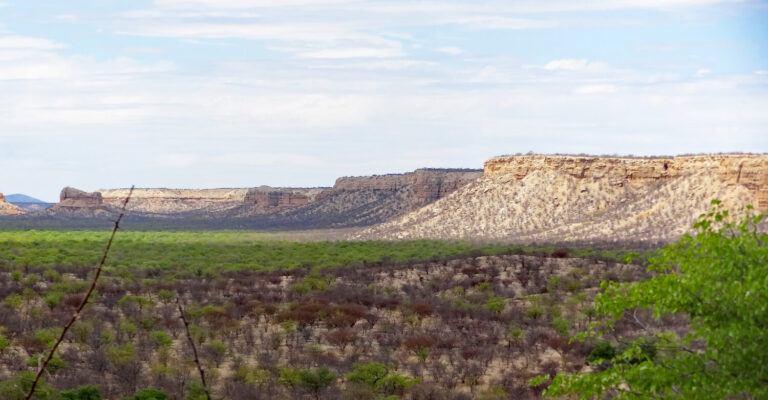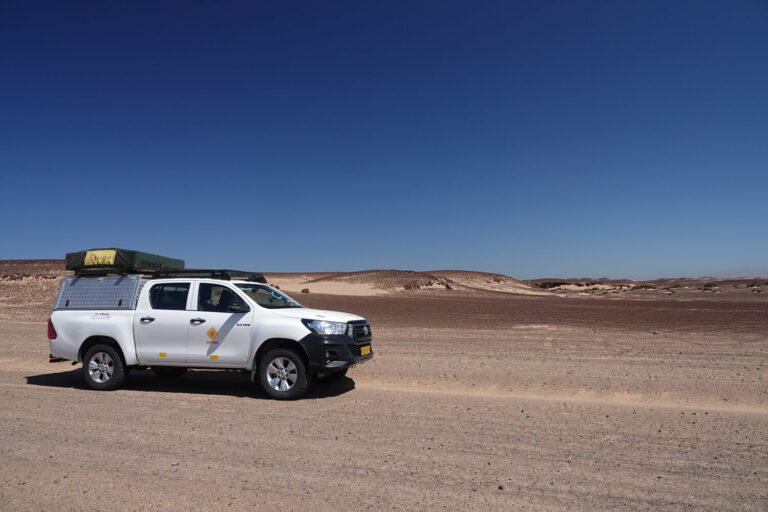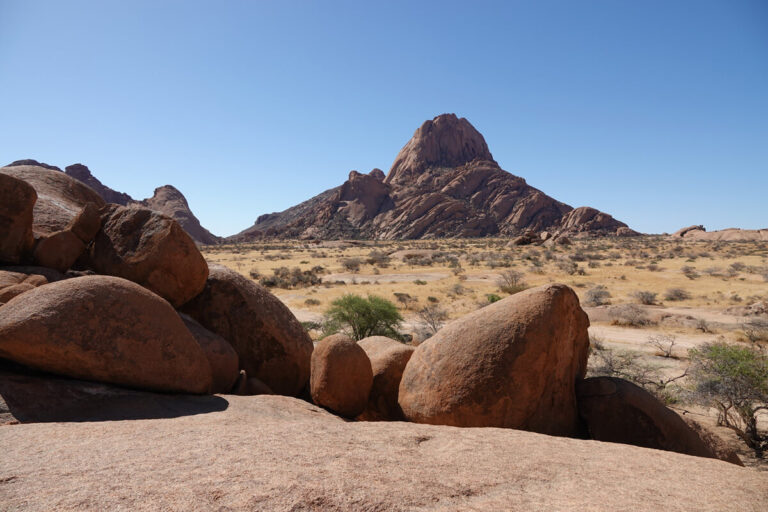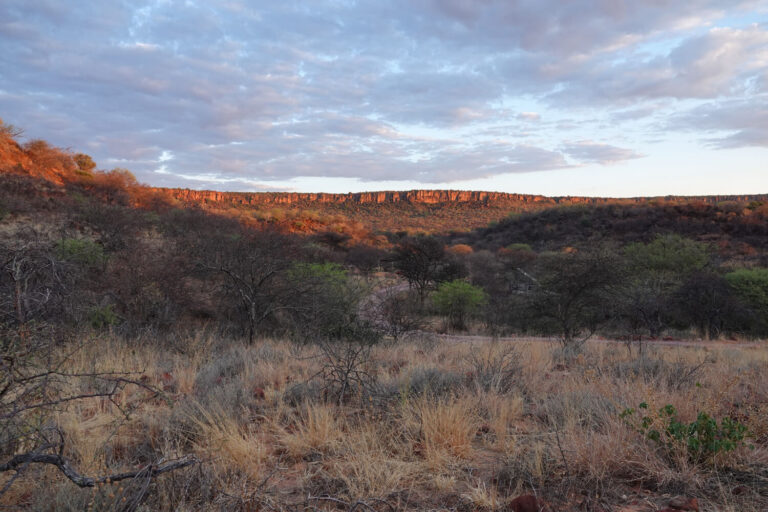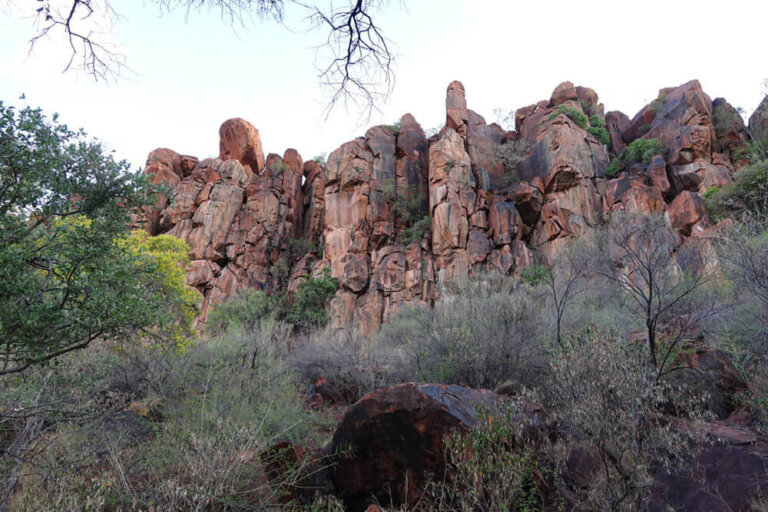Day 5 : Damaraland and the Skeleton Coast

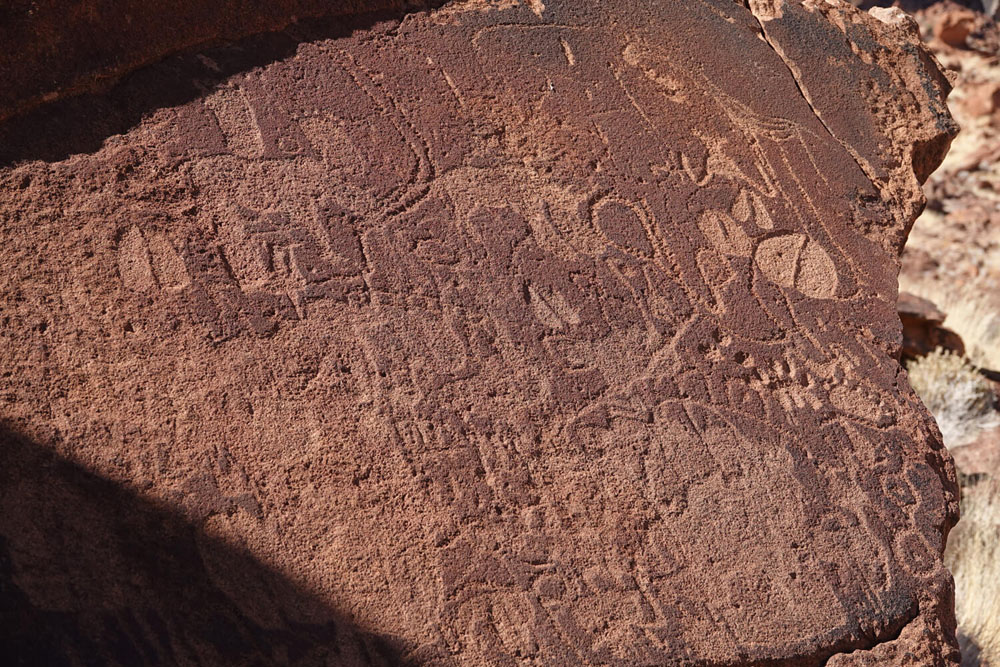
Tweifelfontein – An open-air museum
Our first stop of the day was the Tweifelfontein open-air museum. We had visited the site in 1992, shortly after Namibia’s independence. At the time, there were no facilities, and we were free to walk around and admire the engraved rock masses. Tourism was limited to a few small groups seeking to discover a wild world that had been poorly tamed until then.
Today, access is subject to a fee. Visits are organized and guided by government agents, but the spectacle remains intact, as extraordinary as it is challenging.
Once the tour is over, we head north to the Skeleton Coast through the orange and ochre-tinted mountainous landscapes of Damaraland. In the distance, a few giraffes graze on the tops of the rare acacias that have struggled to take root and grow on this arid, scorching land. Ahead of us, an ostrich flees at full speed. Ostriches are everywhere, all over the country, alone, in pairs and sometimes in families, always fleeing as soon as they are spotted, even from a great distance. They don’t have very good eyesight, but their visual acuity is exceptional. Their retinal ganglion cells enable them to scan the horizon without even moving their heads.
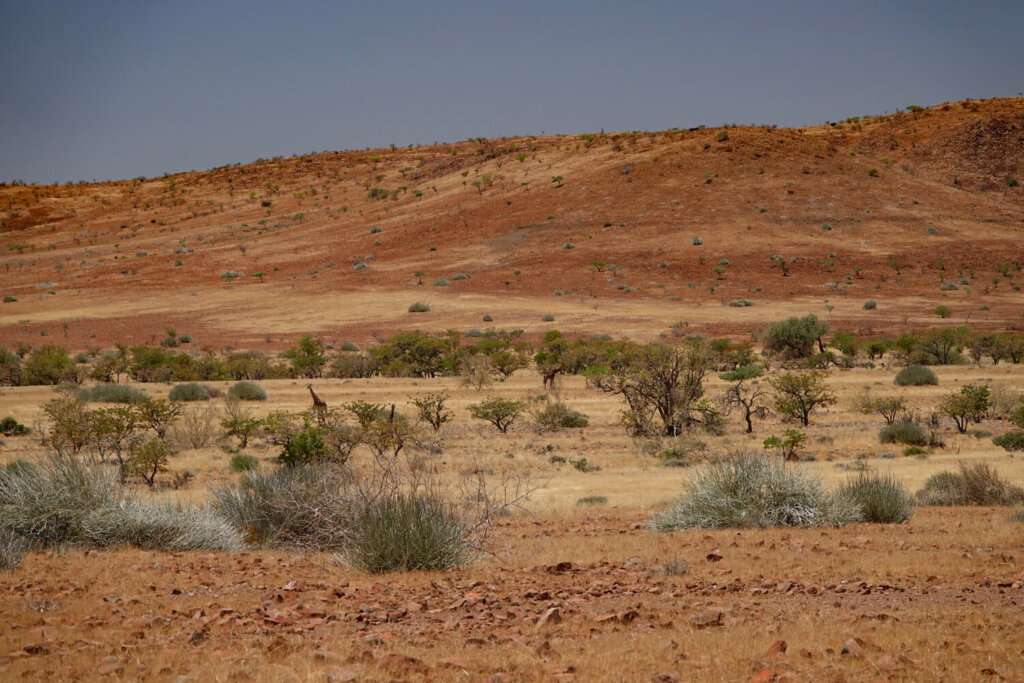
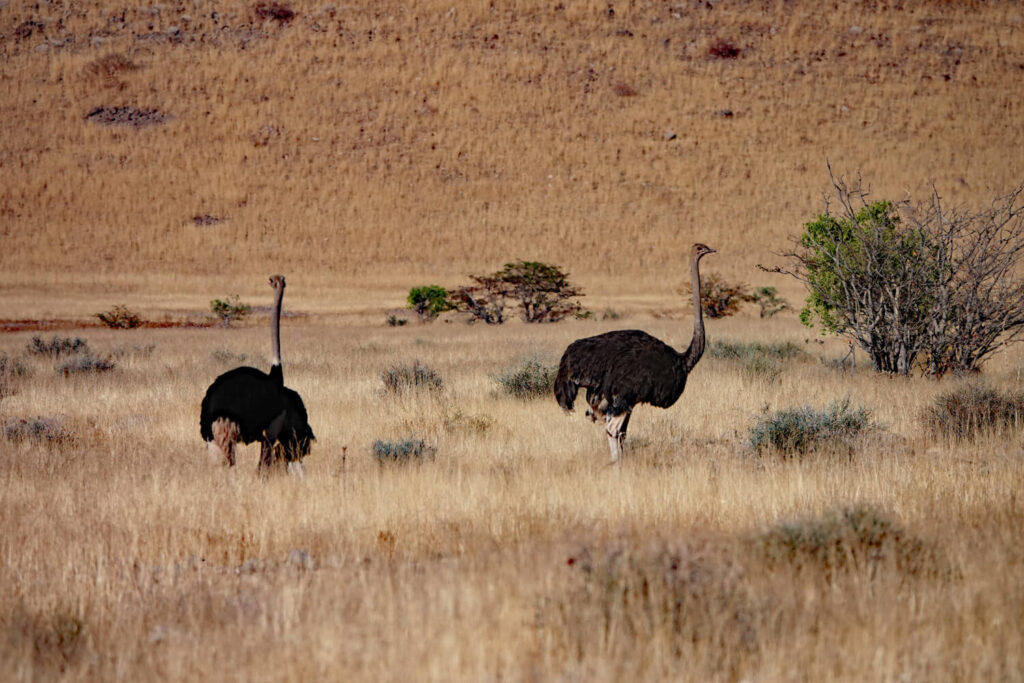
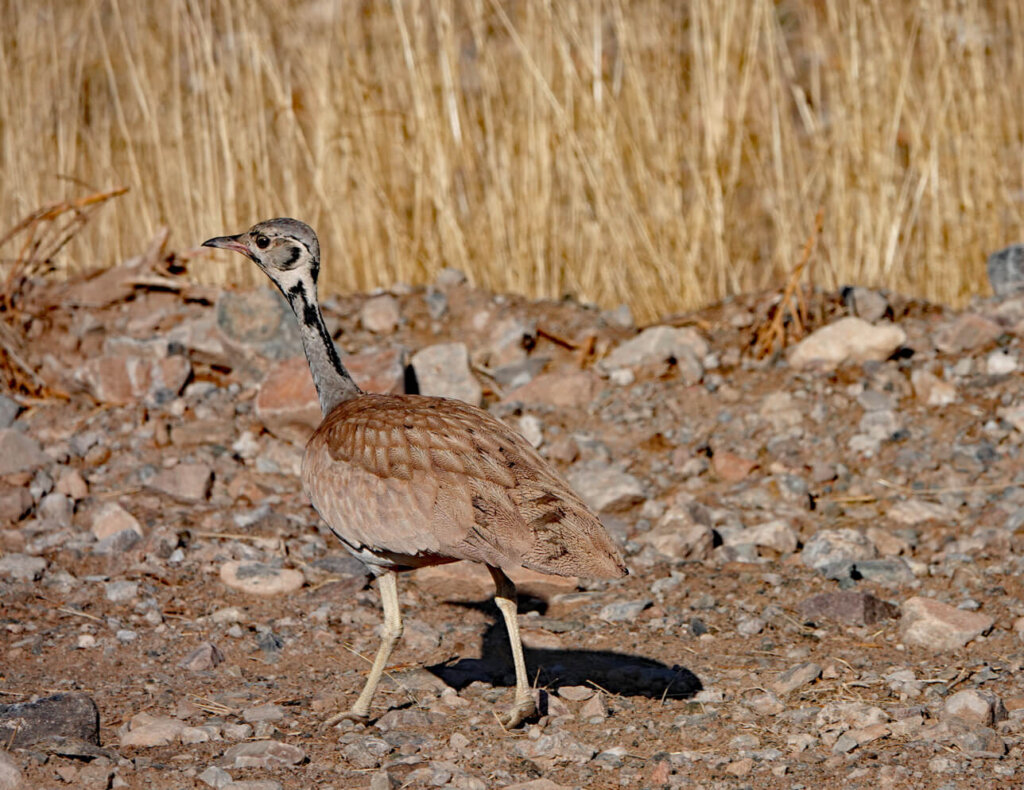
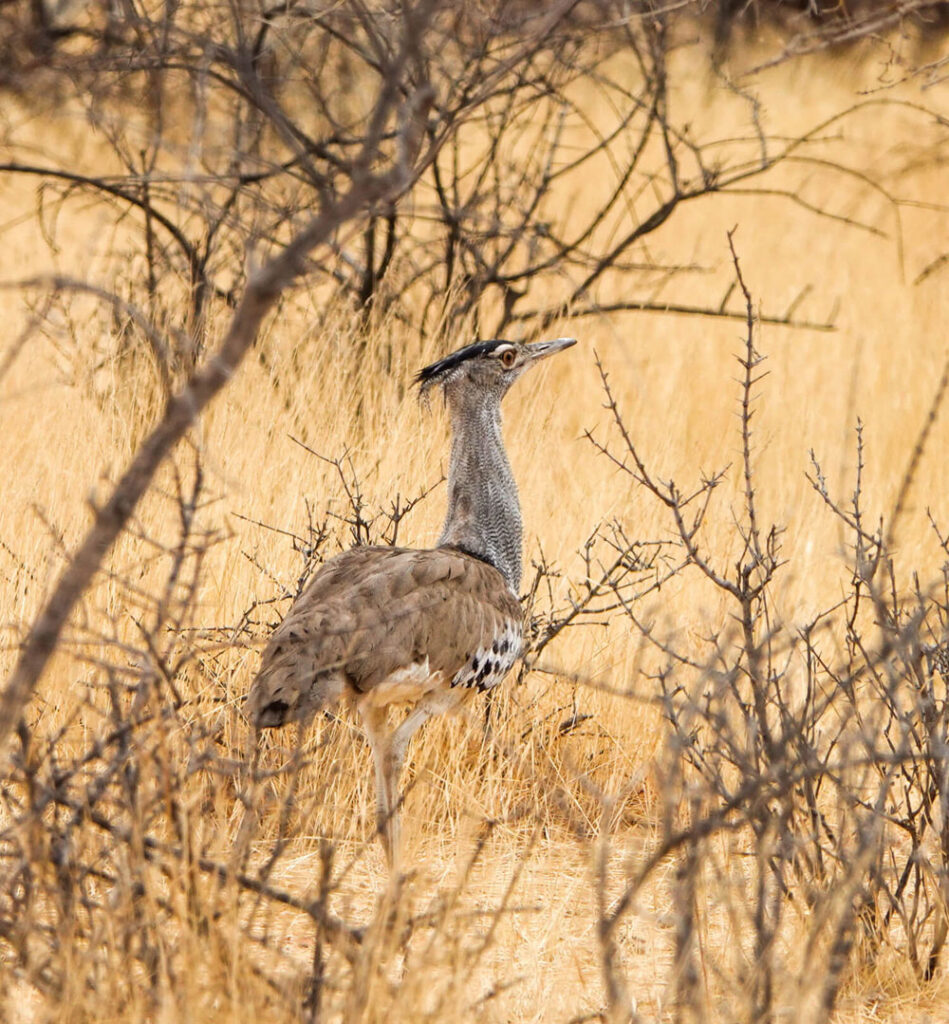
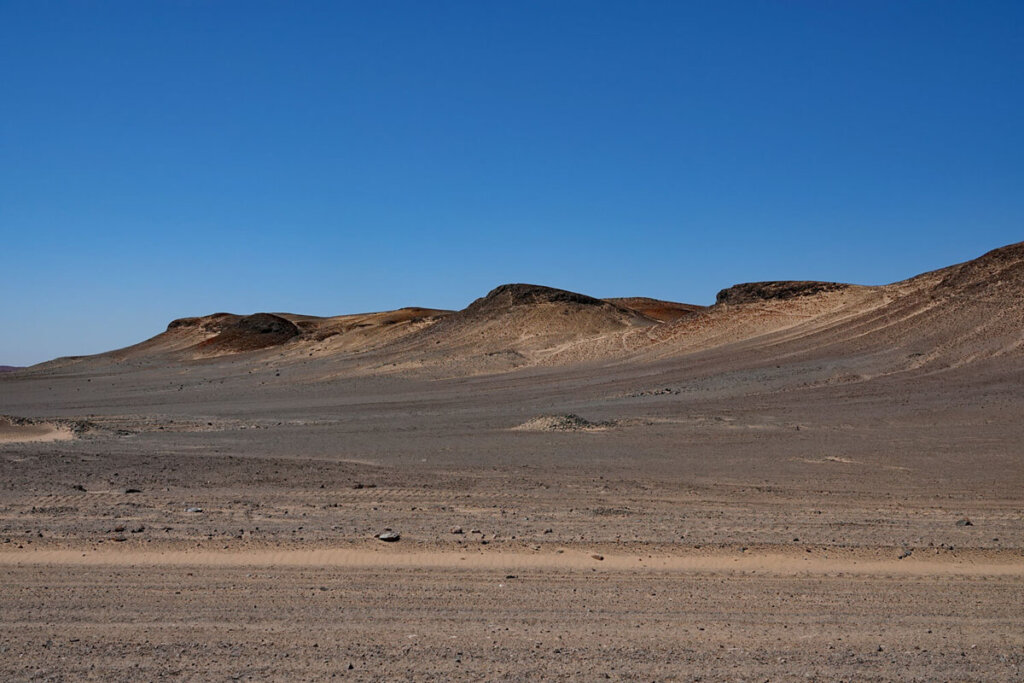
At Berzig, we follow our route eastwards. A waterhole, indicated on Maps.me, attracts our attention and we decide to go there, hoping to find some desert elephants. This small wetland, emerging from the desert and covered with flowers, bushes and trees, reveals itself to us as an Eden. The ground is strewn with fresh elephant faeces. They are not yet invaded by insects, a sign that the elephants are here. Unfortunately, we can’t see them, as the vegetation is too dense. It would be too risky to get bogged down on our own. Since we left Tweifelfontein, we’ve met absolutely no one, not a soul. To go there on foot, without the experience of a guide, would be dangerous. Disappointed, we turn back.
The landscape changes, with the Etendeka mountains receding into the distance and giving way to vast gravel plains. This grey desert, where it rains only a few millimetres a year, is home to some very special plants, including nara and welwitschia mirabilis.
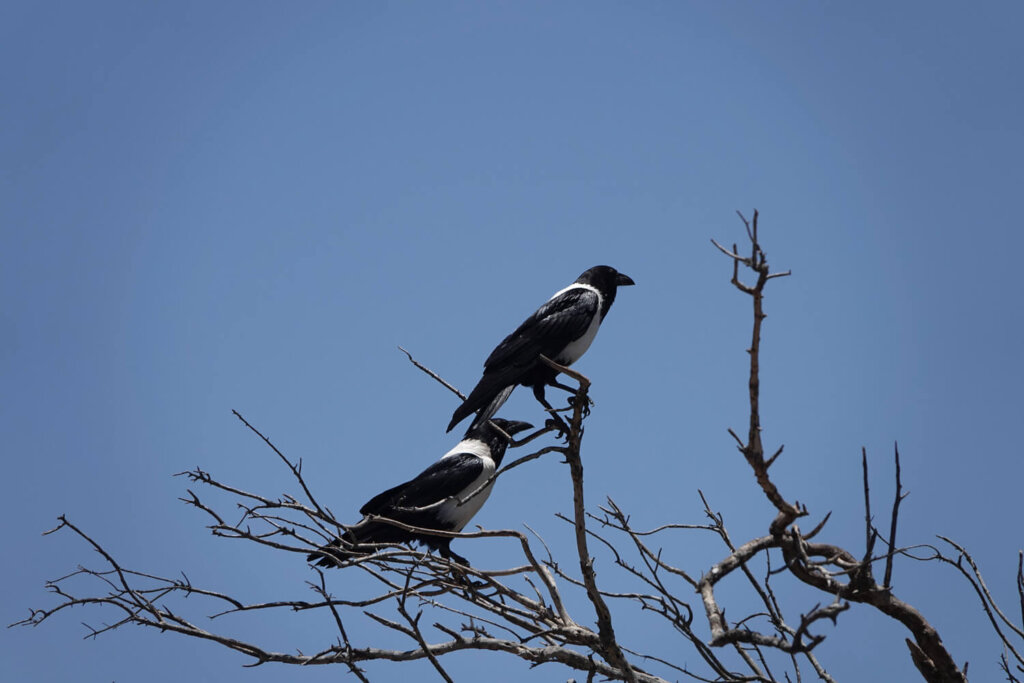
The Skeleton Coast owes its name to the countless skeletons left on the coast by whalers and sea lion hunters. Some references attribute the name to the carcasses of ships that have run aground here. This confusion may have arisen around the time of publication of John Henri Marsh’s book “Dunedin Star”. In this book, the author recounts the sinking of the Blue Star Line ship on the Squeleton Coast in 1942.
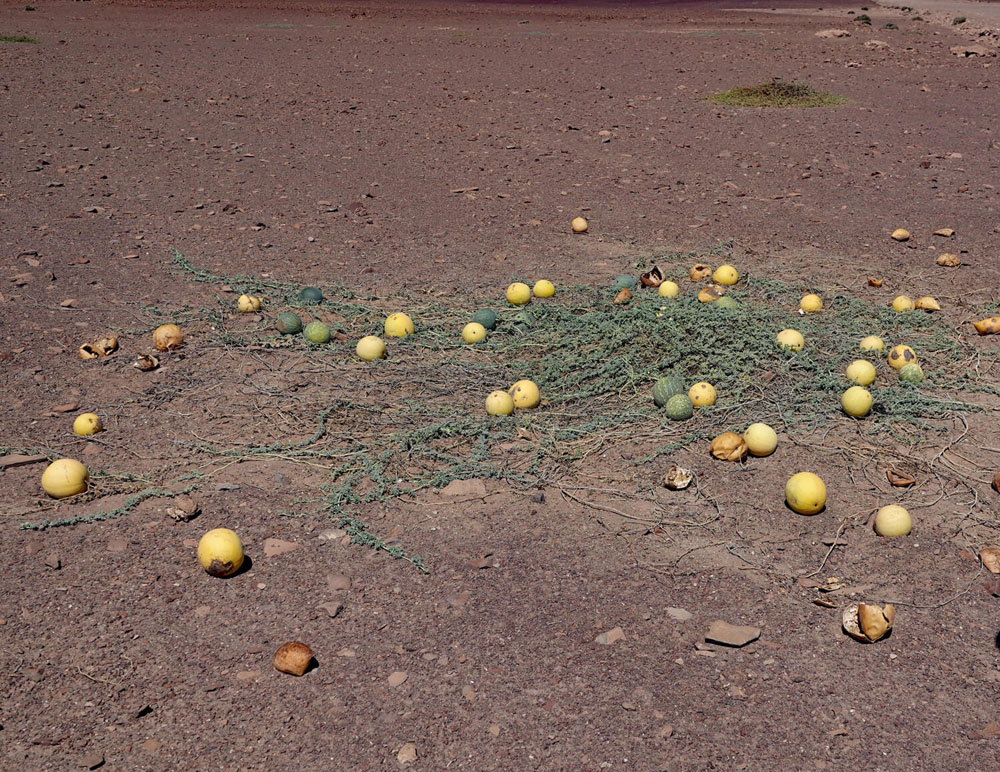
The nara is a thorny bush that grows along the Atlantic coast. It can live for up to 100 years, thanks to its root system, which burrows into the soil down to the water table. Its sweet, juicy fruits contain oil-rich seeds. They are also a boon for many animals and local populations alike.
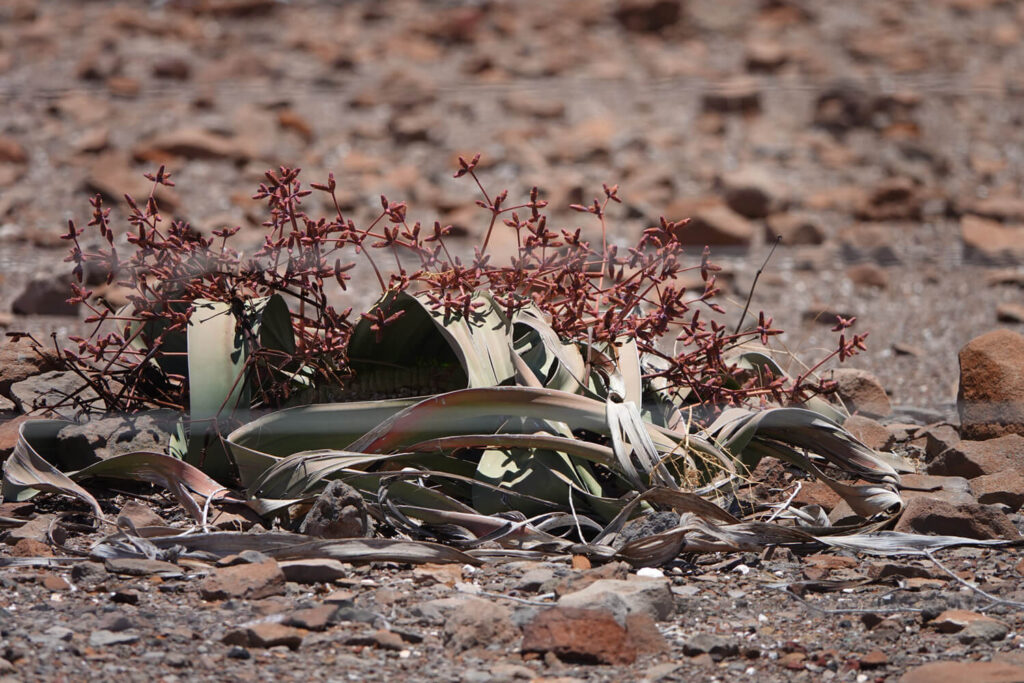
Welwitschia mirabilis grows exclusively in the Namib Desert, along the coastal strip to Angola. This plant has only 2 leaves, which roll up and unroll. Its growth is extremely slow and continuous. They are veritable living fossils, capable of living for thousands of years.
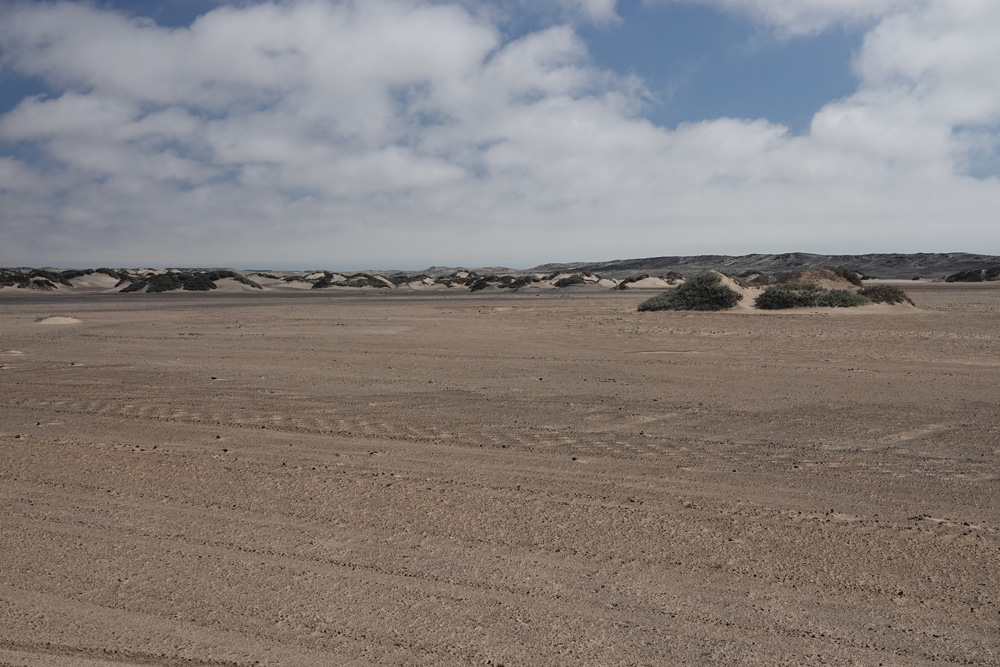
As we move towards the ocean, gravel plains alternate with low rocky hills and small dunes.
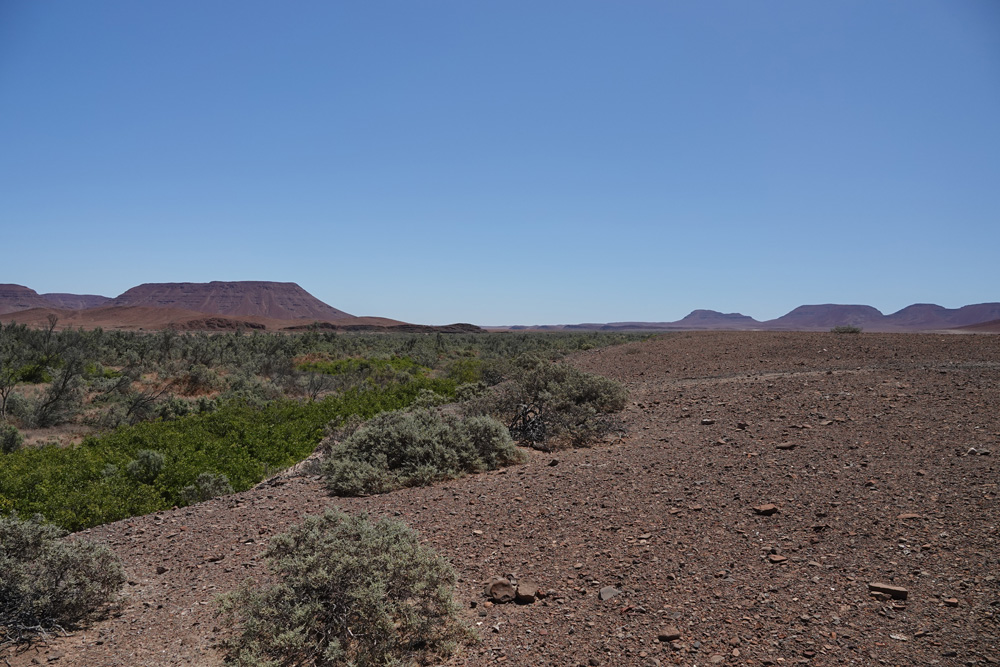
Dried-up riverbeds, like green ribbons, unroll down to the ocean. All the way through, it’s a moving spectacle, imbued with a beauty that defies death.
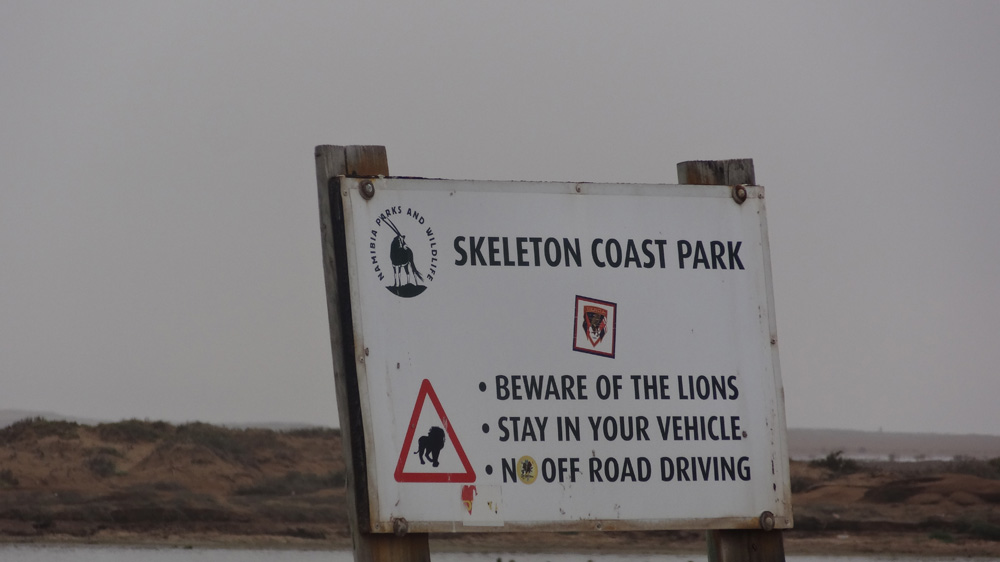
At the end of the track, the ocean appears. Here we are, in the land that the San people call “The land that God created with anger”. The Portuguese called it “The Sands of Hell”.
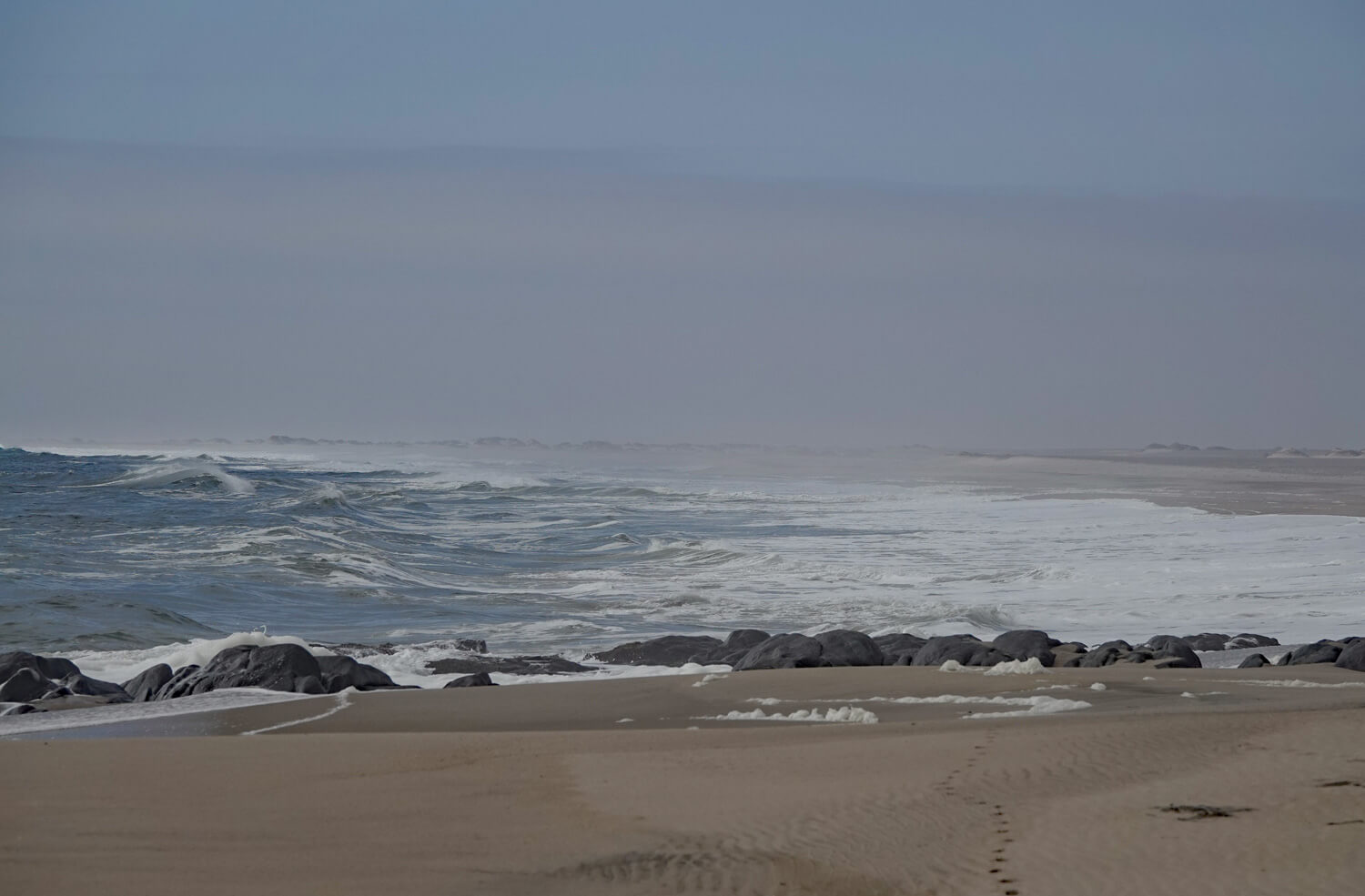
Curious to reach the ocean, we set off along a barely visible track. After a few dozen metres, the Toyota sinks into the deep sand. Unable to set off again, we had to free the wheels and deflate the tires. We continue on foot, keeping an eye on our surroundings, as desert lions in search of food may appear from the dunes at any moment. They come to hunt sea lions.
At the mouth of the Huab River, a lagoon attracts flamingos and cormorants.

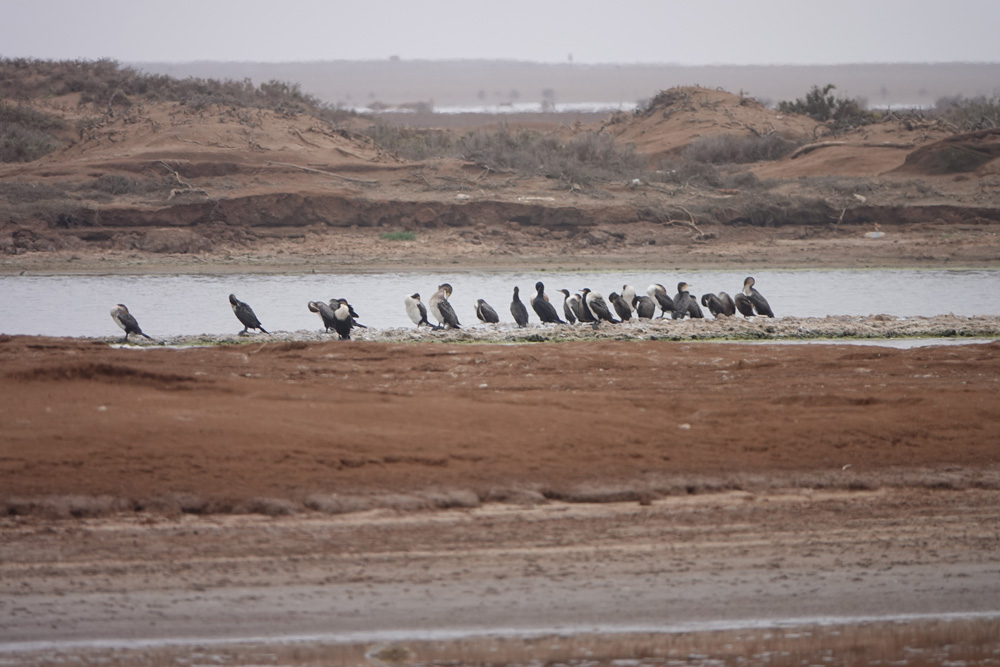
We leave the national park via the Huab gate, marked on both sides by whale bones. As daylight fades, the track merges with the plain; as everywhere in Namibia, there are no signs or lighting. We still have 120 km to go to our next camp, Cape Cross Lodge & Campsite.

It’s dark when we arrive at the camp. We discover a central square partitioned by gray brick walls and built around a sanitary block. It feels like a barracks. The cold wind and grey skies accentuate the austerity of this place, which has nothing in common with the charm of the campsites we’ve experienced so far. The hotel is deserted, and there’s no cook. We have a quick bite to eat, before taking refuge in our tents.
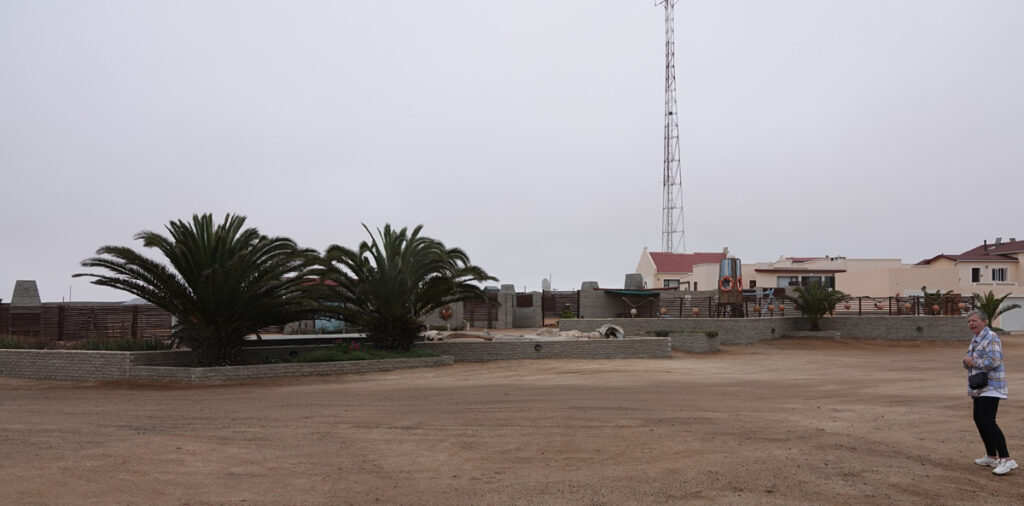
ROAD TRIP IN NORTH_WEST NAMIBIA
Day 1 : Windhoek – Waterberg Wilderness
Day 2 : Hiking
Day 3 : Ugab Terraces
Day 4 : Ugab River Valley
Day 5 : Damaraland and Skeleton Coast
Day 6 : Cape Cross and the Spitzkoppe
Day 7 : Walvis Bay and Sandwich Harbour
Day 8 : Moon Landscape and Welwitschia Drive
Day 9 : The Kuiseb and Solitaire
Day 10 : Back to Windhoek via the Spreetshoogte Pass
